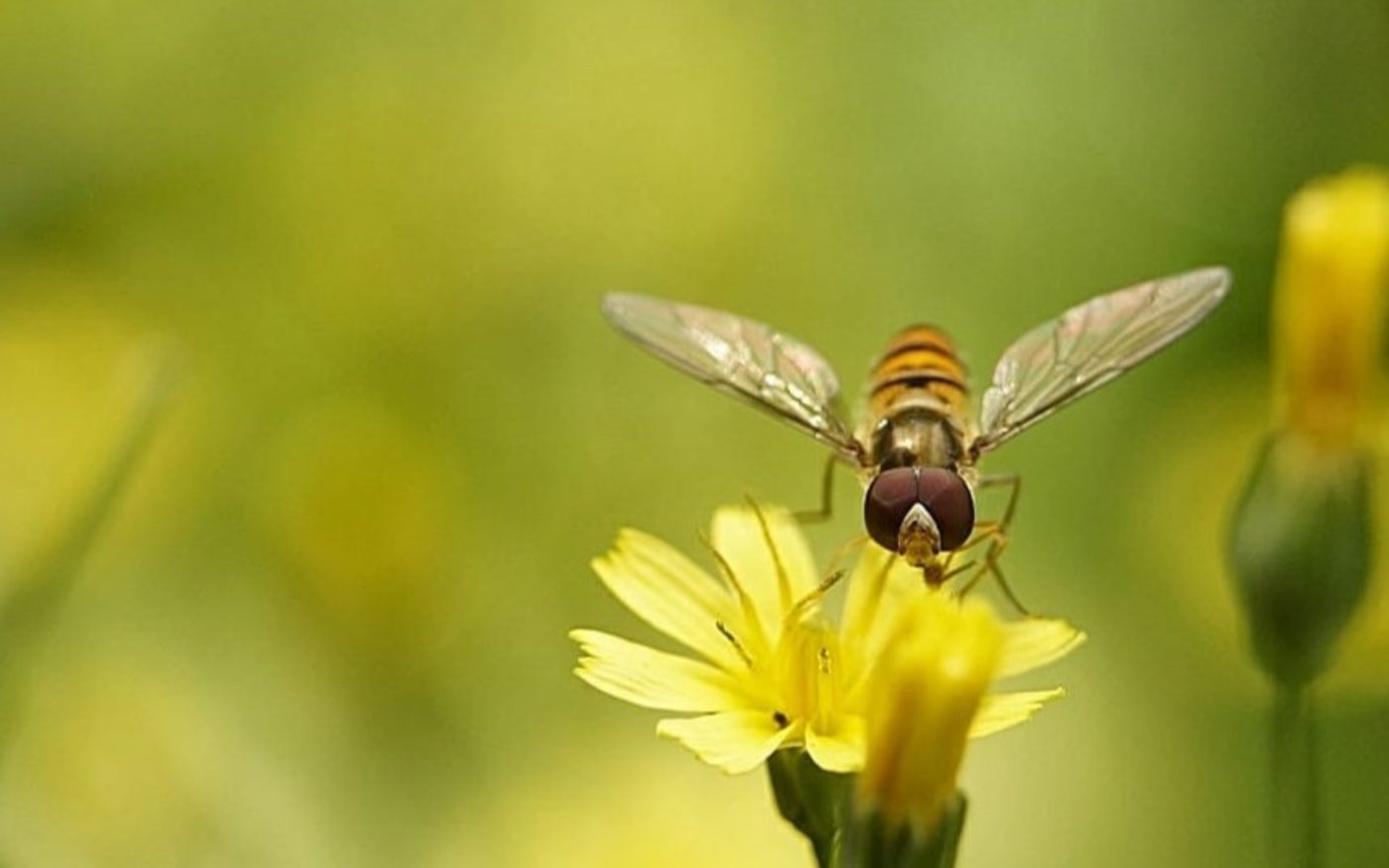Order
True flies
Family
Syrphidae (Also known as Hoverflies)
The hoverfly family contains around 6,000 species around the world, they are often seen hovering around flowers and will often be mistaken for wasps or bees. There are around 250 species of hoverfly in the UK and the marmalade hoverfly is one of the most common.
What do they look like?
This hoverfly is one of the most common in the UK and is relatively small, usually being between 9 and 12mm in length. Their abdomen is dark yellow and has black stripes across it, with thinner stripes, that resemble a moustache, below them. They have large, dark red eyes and slightly metallic thorax which is dark gold in colour.
Where do they live?
Marmalade hoverflies can live in a variety of habitats, from grasslands, farmland, and gardens to woodlands, coastal areas, and wetlands.
Where can they be found?
Marmalade hoverflies are abundant throughout the entire UK.
When can you see them?
They can be found flying around all year, although they become more abundant around August.
Life cycle
This species can be seen all year round, which suggests that they overwinter as adults and emerge on the sunnier days. The females, once mated, search to find a large gathering of aphids, and lay her eggs near them. Once the eggs have hatched, the nocturnal larvae feed on the aphids. They are such good feeders, that they are actually an important biological control method and are used to control aphid populations that feed on commercial crops. Larvae then undergo metamorphosis and turn into adults, adults then fly around feeding from the nectar of flowers.
What do they do?
Adult Marmalade hoverflies help to transport pollen between plants as they feed on nectar. The larvae of this species help to control aphid populations.
Did you know?
You can distinguish between the males and females as the male’s eyes touch at the top of their head, whereas the females do not.

